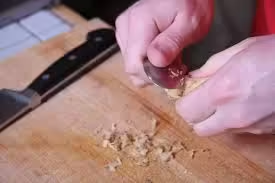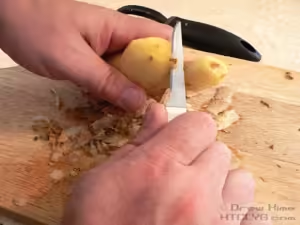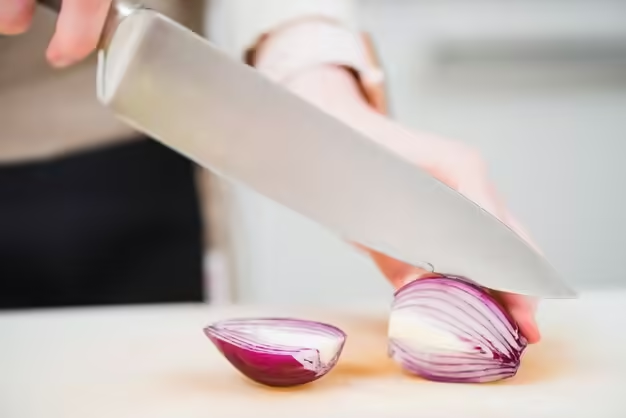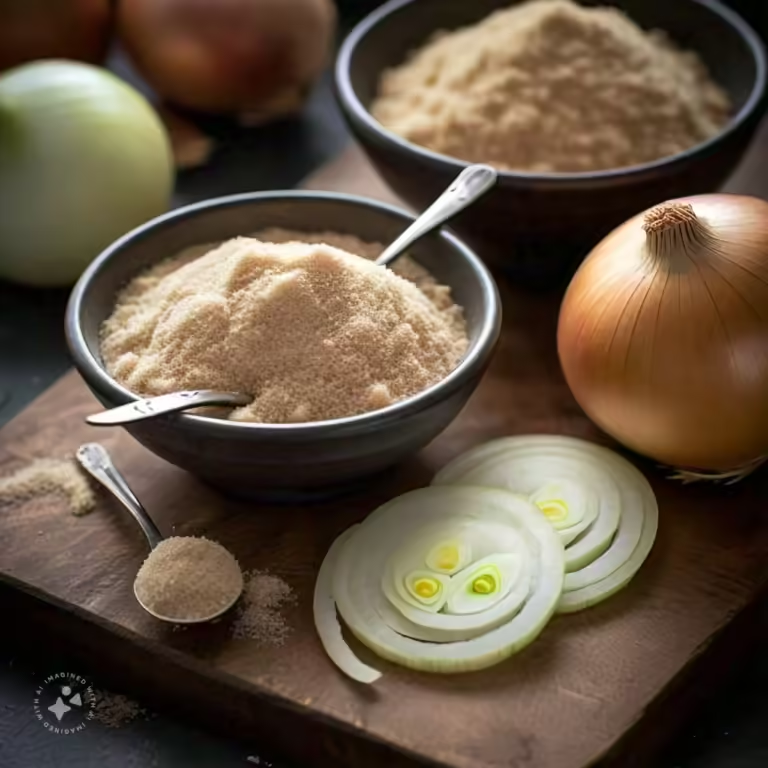Explore everything you need to know about how to peel ginger, from different methods to tips for getting the best results.
Ginger is a powerful, aromatic root that has been used for centuries in cooking and medicine.
Its spicy flavor adds a unique touch to dishes from around the world, and its health benefits—from aiding digestion to reducing inflammation—make it a staple in kitchens everywhere.
However, one of the most common questions home cooks have is how to peel ginger efficiently.
Many people struggle with ginger because of its irregular shape and thin skin.
The good news is that peeling ginger doesn’t have to be difficult! With the right tools and techniques, you can learn how to peel ginger quickly and easily.
In this Article
Why Peeling Ginger Matters
Before diving into the techniques, let’s talk about why learning how to peel ginger is so important.
While ginger skin is edible and contains nutrients, it can be tough and fibrous, especially on older ginger.
This can affect the texture of your dish and may not be pleasant to eat, particularly in recipes that call for finely chopped or minced ginger.
Peeling ginger ensures that you get a smooth, consistent texture in your food.
It also removes any dirt or pesticides that may be lingering on the surface, even if you wash the ginger beforehand.
By knowing how to peel ginger correctly, you’ll be able to use it more effectively in a wide variety of dishes, from soups to smoothies.
Different Methods for Peeling Ginger
There are several methods for how to peel ginger, each with its own benefits. Depending on what tools you have available and the size of the ginger, you can choose the method that works best for you.
1. Using a Spoon

The most popular method for how to peel ginger is using a spoon. This technique is favored by chefs and home cooks alike because it minimizes waste and is easy to do. Here’s how you can peel ginger with a spoon:
Hold the ginger in one hand and a spoon in the other.
Using the edge of the spoon, gently scrape the skin off the ginger root.
You’ll notice that the skin comes off easily without much force.
Continue turning the ginger as you scrape off the skin.
This method works well because the spoon can get into all the nooks and crannies of the ginger’s irregular shape without cutting too deeply into the flesh.
2. Using a Knife

If you’re in a rush and need how to peel ginger quickly, you can use a small paring knife. Here’s how to peel ginger with a knife:
Hold the ginger firmly in one hand and the knife in the other.
Carefully slice the skin off, starting from the top of the ginger and working your way down.
Try to cut as close to the surface as possible to avoid removing too much of the ginger flesh.
While this method is faster than using a spoon, it’s also less precise.
You’ll likely lose some of the ginger flesh, especially around the knobbier parts of the root.
However, if you’re working with a large piece of ginger, this might not be an issue.
3. Using a Vegetable Peeler

Another tool you can use for how to peel ginger is a vegetable peeler.
This method is particularly useful if you’re working with a larger piece of ginger that has a more uniform shape. Here’s what to do:
Hold the ginger in one hand and a vegetable peeler in the other.
Use the peeler to remove the skin in long, smooth strokes.
Be careful around any bumpy areas where the peeler might not work as well.
A vegetable peeler is great for peeling larger amounts of ginger quickly, but like the knife method, it can result in some wasted flesh.
It’s best used when you have a lot of ginger to peel and don’t mind sacrificing a bit of it.
4. Peeling Ginger Without Tools
Did you know that you don’t always need a tool to peel ginger? If you’re using young, fresh ginger, the skin is often so thin that you can remove it with your fingers. Here’s how to peel ginger by hand:
Rub the surface of the ginger with your fingers or a damp cloth.
The thin skin should come off easily, revealing the soft flesh underneath.
This method works best with very fresh ginger, which is typically found in the spring and summer months.
It’s also the ultimate zero-waste technique since you’re not cutting away any of the ginger itself.
Do You Always Need to Peel Ginger?
Now that you know several methods for how to peel ginger, you might be wondering if peeling is always necessary.
The answer depends on how you’re using the ginger and your personal preferences.
When You Don’t Need to Peel Ginger:
If you’re making a broth, tea, or smoothie, you can often skip peeling the ginger.
The skin will either be strained out or blended so finely that you won’t notice it in the final product.
Additionally, the skin contains nutrients that add to the health benefits of ginger, so keeping it on can be a good thing.
When You Should Peel Ginger:
For recipes that require finely chopped, grated, or minced ginger, it’s best to peel the root.
The skin can be tough and fibrous, which can affect the texture of your dish.
Peeling is also recommended for any recipes where the ginger will be served raw, such as in salads or garnishes.
Ultimately, whether or not to peel ginger is up to you, but knowing how to peel ginger gives you the flexibility to use it in a variety of ways.
How to Peel Ginger for Specific Uses
Different recipes call for different preparations of ginger, so here’s how to peel ginger based on specific uses:
For Cooking:
When adding ginger to stir-fries, soups, or sauces, it’s best to peel it before chopping or grating.
Use the spoon method how to peel the ginger and then slice or mince it as needed.
For Juicing:
If you’re juicing ginger or using it in a smoothie, you can choose whether to peel it based on your preference.
If you want a smoother texture, peel the ginger using a spoon or knife.
For Garnishing:
If you’re using ginger as a garnish, it’s important to peel it carefully to ensure a clean presentation.
Use a spoon or knife to peel the ginger, then slice it into thin strips or matchsticks for a beautiful garnish.
How to Peel Ginger Based on Its Age
The age of the ginger root can affect how easy it is to peel and what method works best. Here’s how to peel ginger based on whether it’s young or mature:
Young Ginger:
Young ginger, also known as spring ginger, has a thin, pale skin that is very easy to remove.
You can often peel it by rubbing it with your fingers or using a spoon.
This type of ginger is more delicate and has a milder flavor, making it perfect for garnishes or raw dishes.
Mature Ginger:
Mature ginger has a thicker, tougher skin that requires more effort to peel.
The spoon method works well, but you may need to use a knife or vegetable peeler for particularly stubborn areas.
Mature ginger has a stronger, spicier flavor and is commonly used in cooking.
Common Mistakes When Peeling Ginger
Even though peeling ginger is relatively simple, there are a few common mistakes people make. Here’s what to avoid when learning how to peel ginger:
Peeling too deeply:
One of the biggest mistakes is peeling too much of the ginger flesh along with the skin.
This can happen when using a knife or peeler, especially around the knobby parts.
Try to remove only the skin to avoid wasting the ginger.
Not using fresh ginger:
Peeling ginger that’s old or dried out can be difficult.
If the skin is shriveled and the flesh is hard, it’s time to get a fresh piece.
Fresh ginger is easier to peel and tastes much better in recipes.
By avoiding these mistakes, you’ll save time and ginger, making the process more efficient.
Unconventional Uses for Ginger Peels
Ginger is a versatile ingredient that adds flavor and nutrition to countless dishes.
While many people know how to peel ginger to use the root itself, not everyone realizes that the peels can also be beneficial.
Rather than discarding them, consider these unique ways to make use of ginger peels and maximize the benefits of this incredible root.
1. Ginger Tea:
One of the simplest ways to utilize ginger peels is by making ginger tea.
After peeling, add the peels to boiling water along with a slice of lemon and a bit of honey for a soothing drink.
The tea not only carries the ginger’s warmth but also retains some of the root’s essential nutrients, providing a healthy beverage to sip on throughout the day.
2. Flavorful Broth:
When preparing stocks or broths, toss the ginger peels into the pot.
They impart a subtle ginger flavor, enriching the broth without any added effort.
Just strain them out before serving, and enjoy the depth of flavor they provide.
3. Infused Water:
For a refreshing twist on hydration, add ginger peels to a pitcher of water.
Let it infuse for a few hours in the fridge to create a subtly flavored drink that’s perfect for warm weather or as a unique accompaniment to meals.
4. Natural Fertilizer:
If you’re into gardening, ginger peels can also serve as a natural fertilizer.
Chop them up and add them to your compost pile or directly into your garden soil.
They break down over time, enriching the soil and benefiting your plants.
By incorporating these ideas into your routine, you’ll not only learn how to peel ginger effectively but also discover innovative ways to reduce waste and enhance your culinary experience
FAQs About Peeling Ginger
Here are some frequently asked questions related to how to peel ginger that can help clarify any doubts you may have:
1. Can I peel ginger ahead of time?
Yes, you can peel ginger ahead of time. Once peeled, wrap it in plastic wrap or store it in an airtight container in the refrigerator. It’s best to use
the peeled ginger within a week for optimal freshness. If you want to store it for longer, consider freezing it, either whole or chopped.
2. Is it better to peel ginger before grating or chopping?
Yes, it is generally better to peel ginger before grating or chopping. Peeling helps remove the tough skin, resulting in a smoother texture in your dishes. If you grate unpeeled ginger, the skin can create a fibrous texture that may not be desirable in your recipe.
3. What should I do if I can’t peel ginger?
If you find peeling ginger challenging, consider using the spoon method. It’s one of the easiest techniques, requiring minimal effort. Alternatively, you can purchase pre-peeled ginger from the store, which can save you time in the kitchen.
4. How can I tell if ginger is fresh?
Fresh ginger should have smooth, firm skin without any wrinkles or blemishes. It should also have a spicy, aromatic scent. If the ginger feels soft or has spots of mold, it’s best to avoid using it.
5. Can I eat ginger skin?
Yes, ginger skin is edible, and some people choose to leave it on, especially when making broths or smoothies. However, if you’re looking for a smooth texture in your dishes, peeling the ginger is recommended.
Tips for Using Ginger in Recipes
Knowing how to peel ginger is just the beginning.
Here are some tips for incorporating ginger into your cooking effectively:
Use fresh ginger whenever possible:
Fresh ginger has a vibrant flavor that dried or powdered ginger cannot match.
It enhances the taste of your dishes and offers more health benefits.
Experiment with different preparations:
Ginger can be used in various forms, including grated, minced, sliced, or juiced.
Pair ginger with complementary flavors:
Ginger pairs well with flavors like garlic, citrus, and soy sauce.
When creating marinades, dressings, or stir-fries, consider combining ginger with these ingredients for a more complex flavor profile.
Add ginger to sweets:
Don’t limit ginger to savory dishes! It adds a warm, spicy note to cookies, cakes, and other desserts.
Consider using it in gingerbread cookies or spicing up your favorite cake recipe.
Ginger comes in different varieties, and each type has its own unique flavor and use.
One of the most well-known varieties is turmeric ginger, which has a vibrant yellow color and is known for its anti-inflammatory properties.
Another variety is blue ginger, also called galangal, often used in Southeast Asian dishes.
Learning how to peel and prepare these varieties opens up a world of new flavors for your cooking.
For example, peeling turmeric ginger is similar to regular ginger, but be cautious as it can stain your hands and surfaces.
Cooking with Kids: A Fun Way to Teach Healthy Eating
Getting kids involved in the kitchen is a great way to introduce them to healthy habits early on.
Peeling ginger can be a fun, hands-on activity that teaches them motor skills and healthy eating.
Let them help by using a spoon to scrape off the ginger’s skin—a safe and easy method for kids.
As they work, you can explain how ginger is a healthy ingredient used in many dishes, from teas to soups, making it a fun learning experience as well.
Ginger in Global Cuisines: A World of Flavors
Ginger is used in cuisines all over the world, giving dishes a unique, spicy flavor.
In Indian cuisine, ginger is often blended with garlic to form a paste that adds depth to curries.
In Thai cooking, it’s used to flavor soups, like the famous Tom Yum, adding a zesty kick.
Jamaican cuisine features ginger in drinks like ginger beer, offering a refreshing yet spicy twist.
Experimenting with ginger in these global dishes is a great way to expand your culinary skills and enjoy flavors from around the world.
Ginger for Health: Natural Remedies and Teas
Ginger is packed with health benefits, making it a popular choice for home remedies.
It’s well-known for helping with digestion and reducing nausea. Many people drink ginger tea to soothe an upset stomach or boost their immune system.
You can make your own by peeling and slicing fresh ginger, boiling it in water, and adding a touch of honey for sweetness.
Adding ginger to your daily routine is a simple way to promote better health naturally.
Final Thoughts on How to Peel Ginger
Learning how to peel ginger is an essential kitchen skill that can enhance your cooking and make your dishes more enjoyable.
By mastering different peeling methods, you can use this versatile root more effectively and creatively in your meals.
Remember that fresh ginger is key to achieving the best flavor and texture, so always choose high-quality ginger when you can.
And don’t forget about the ginger peels—put them to good use in teas, broths, or infused water to minimize waste.
As you explore the wonderful world of ginger, you’ll discover countless ways to incorporate its spicy goodness into your cooking.
From hearty soups to refreshing smoothies, ginger is a flavor powerhouse that can elevate your culinary creations.
By following the tips and techniques outlined in this guide, you will become adept at peeling ginger and using it to enhance your meals. So next time you find yourself with a piece of ginger in hand, remember these methods and enjoy the flavor and health benefits this incredible root has to offer!



